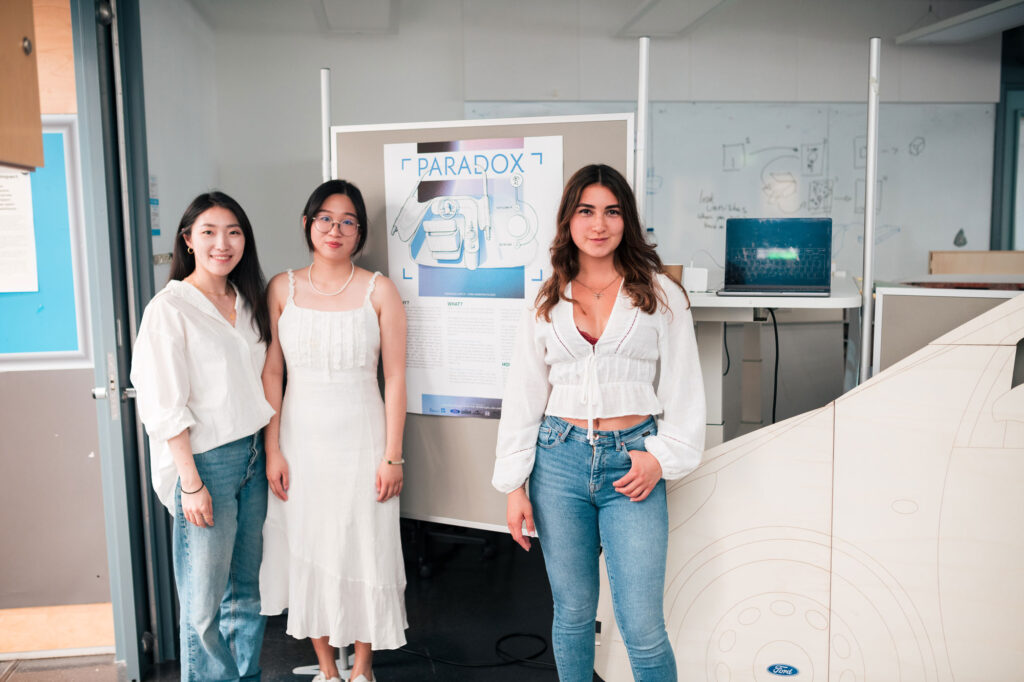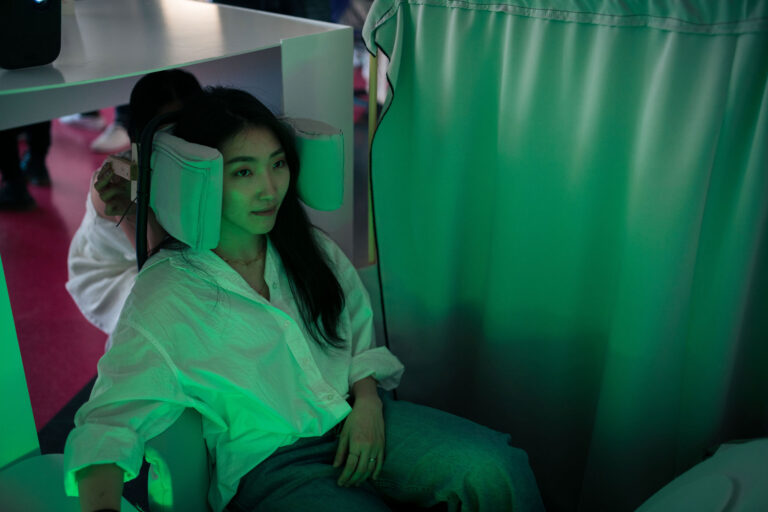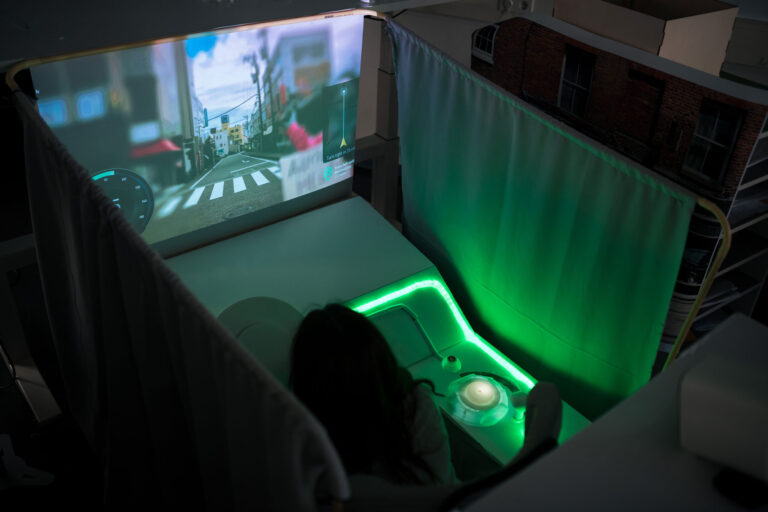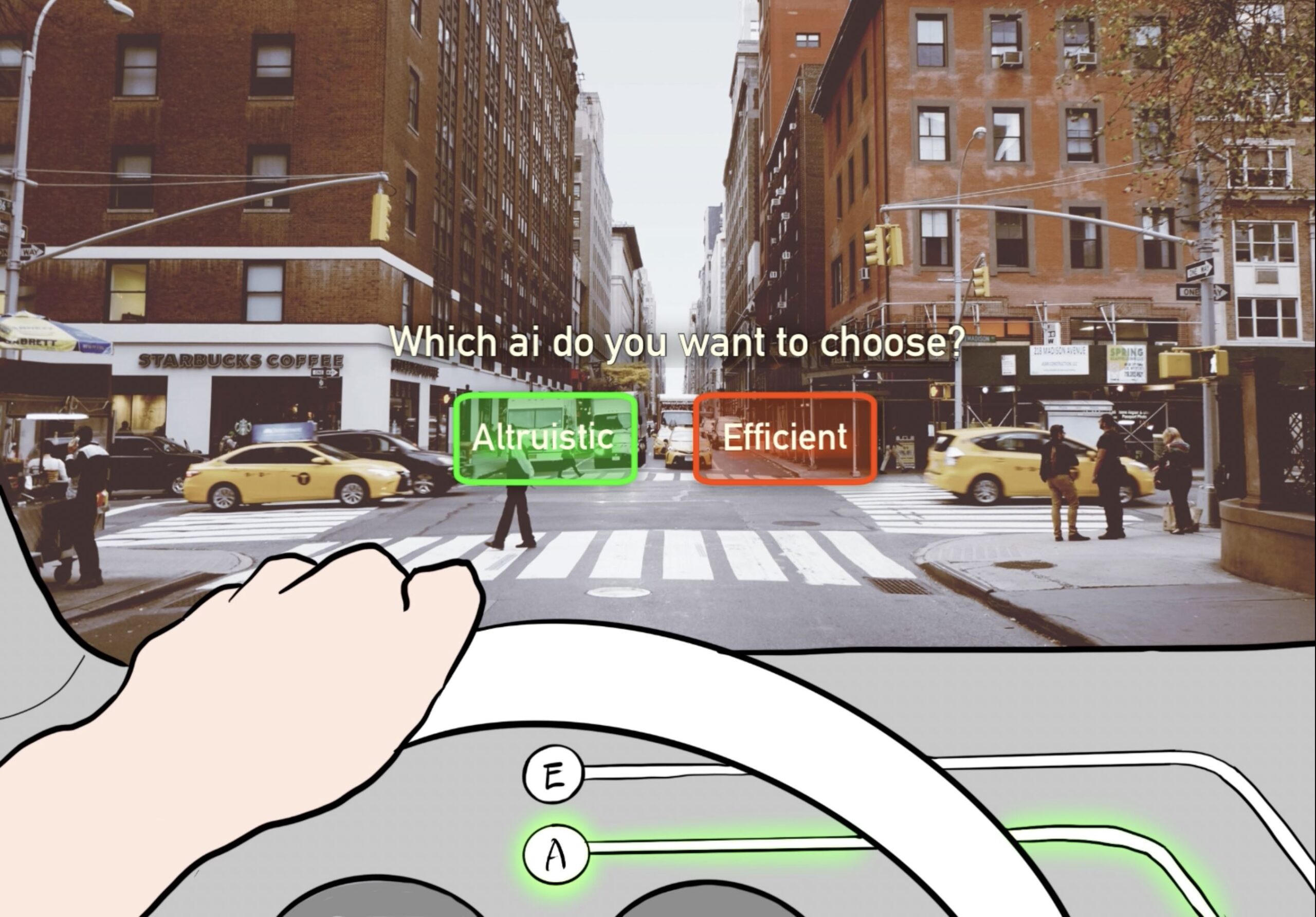
Which AI do you wanna choose? efficient or altruistic?
Digital prototypes to address drivers' tendency to prioritize personal convenience over safety for pedestrians and other road users, aiming for trustworthy AI
Ford, an automotive company, envisions a future where AI technology could unlock unprecedented possibilities, yet how to create trustworthy AI in driving a car remains the challenge. With “Research through Design” process, our team developed iterative prototypes, resulting in a final speculative concept.
Our team focused on drivers facing ethical dilemmas, balancing personal convenience with safety for themselves and others outside the car. This prioritization of personal efficiency can lead to aggressive or selfish driving behaviors, potentially overlooking the perspectives of pedestrians and others. Encouraging drivers to reflect on their decisions promotes empathy toward pedestrians and breaks their own bubbles of their routines.
🧐 Synthesize insights into a meaningful concept
⚒️ Develop and test prototypes
✍️ Visualize concepts
Category
Academic / Team
Type
Tech / Space / UX / UI
Scale
2000mm x 2400mm
Period
Feb. 2022 – Jun. 2022
The course from Interactive Technology Design
Role
Concept ideation, Insight analysis, Prototyping, Testing, Concept visualization
Supervised by
Tomasz Jaskiewicz
Client
Ford
Concept Explorations with Research Through Design
How might we create a meaningful experience in the car?
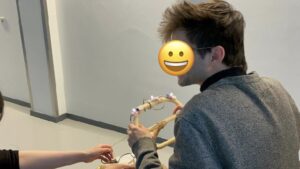
AI provides a slight change in daily driving routines for drivers to appreciate them as a special day.
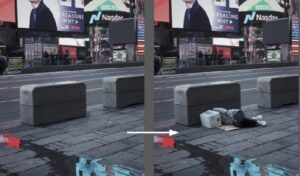
How do people think about breaking their bubbles?
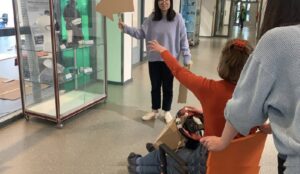
AI presents fun challenges along the route for drivers to pose grabbing gestures for collecting virtual objects
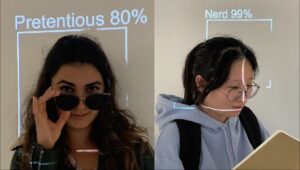
AI's bias, stemming from its training data, can serve as a tool to expose and confront individual biases by demonstrating their data interpretation.
What if, inside a car, there are two conscious AI’s that react to the driver’s ethical decisions?
Prototyping a car ambience
We designed the entire ambiance of a car that could switch modes between efficient and altruistic AI entities depending on the driver’s selection. The mode they choose changes the interior of the car, seat structure, and vision, thus overall driving experience.
What happens in the efficient mode?

The car changes in order to create a more focused driving environment, aiming to make the driver not get distracted by any other environmental factors.
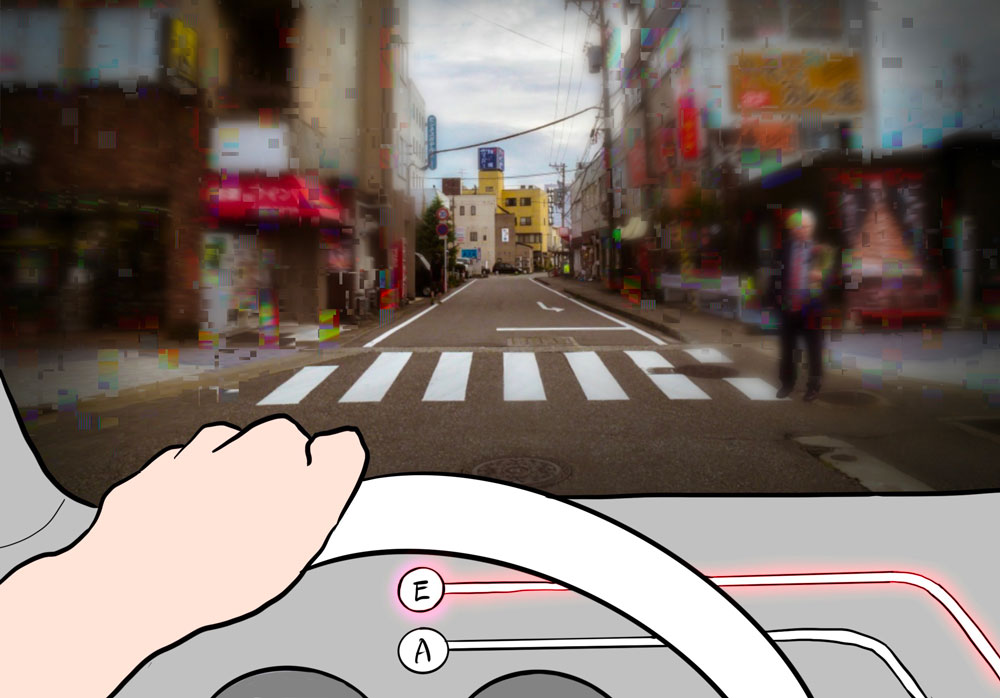

What happens in the altruistic mode?
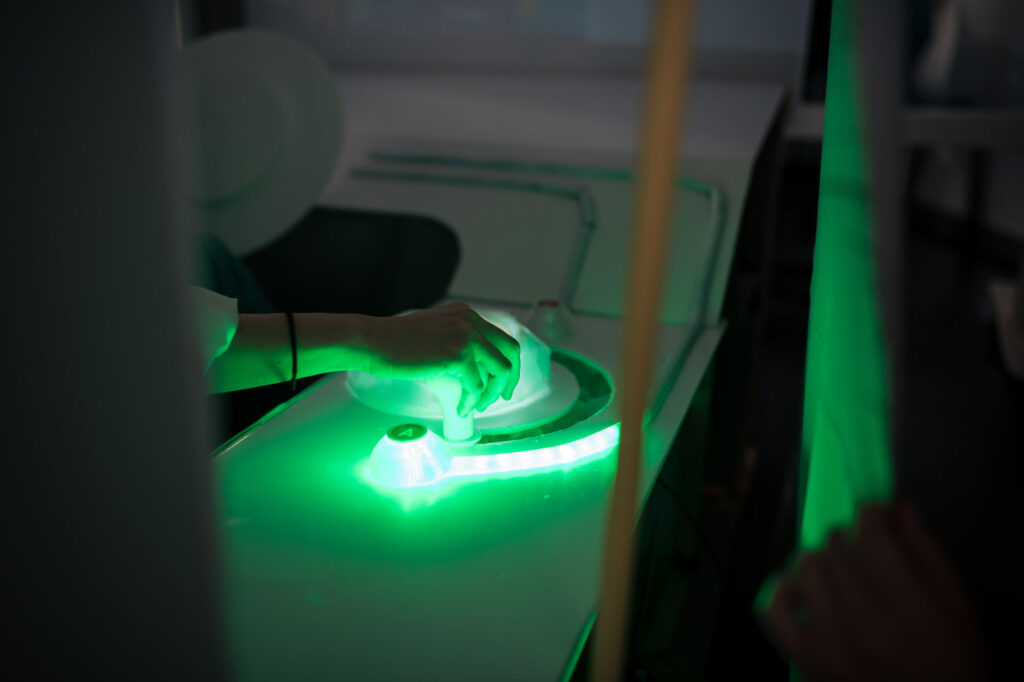
The car changes to create a more open driving environment where the driver could see and react to the outside world.
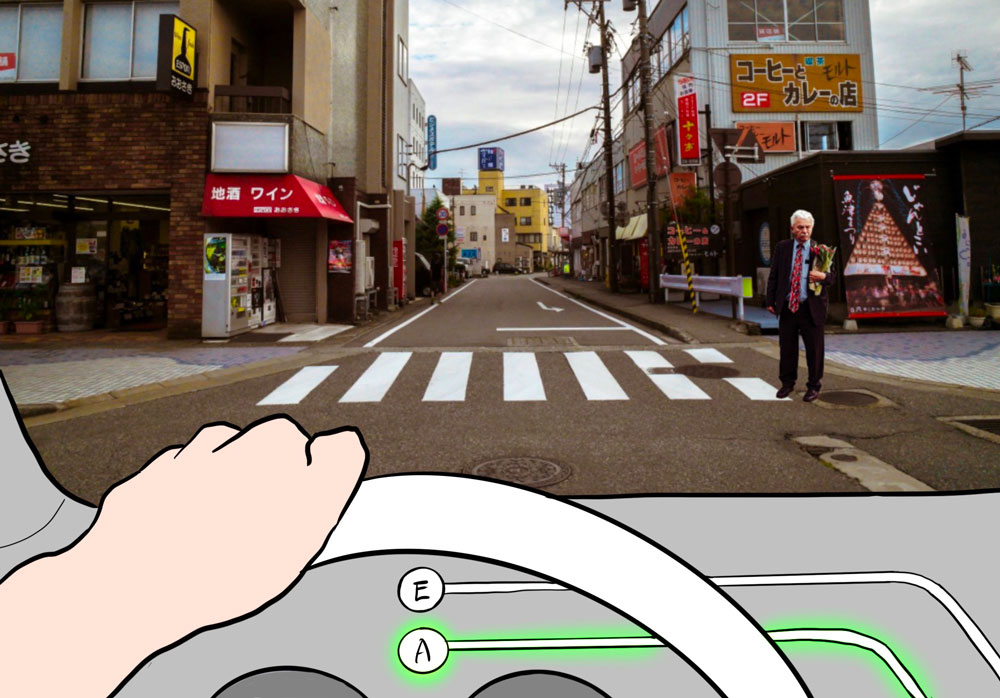
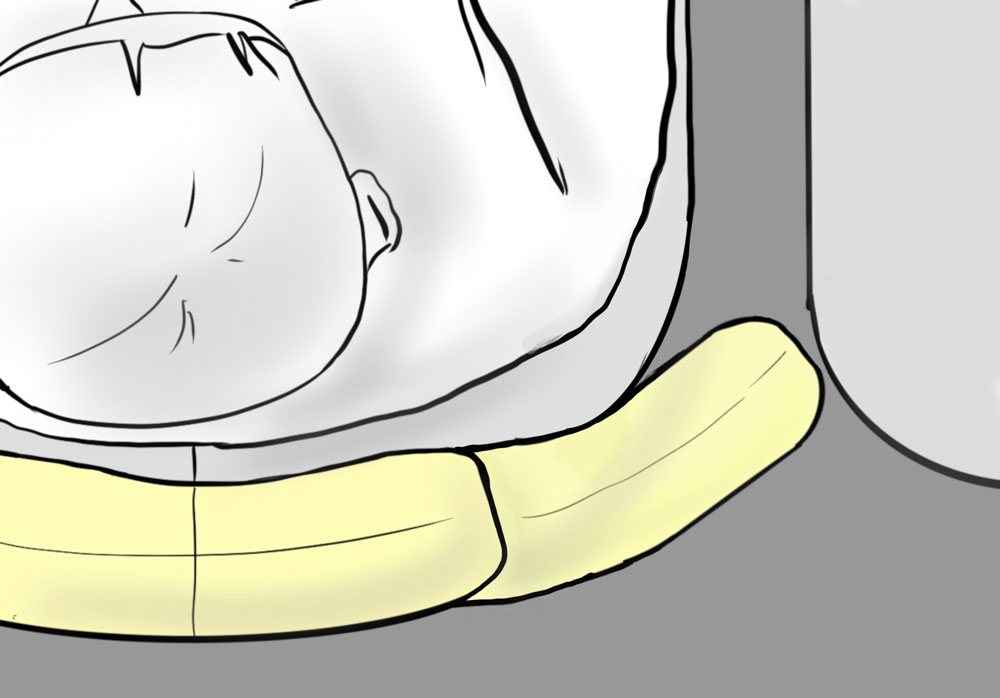
Takeaways
Simplifying interaction of the concept is crucial for a successful exhibition. Initially, we had a complex concept but decided to break it down to make it more understandable for visitors.
Human like tactile feedback can foster a sense of support and energy, as found in the prototype testing. This feedback also aids in creating a gentle interaction for critical-thinking design.
Facilitating Internal and external communication played a vital role in developing the best concept. Internally, we established a common design framework to enhance team communication. Externally, we balanced practical client perspectives with speculative designer insights while working with Ford.
Context and Vision
Our concept provokes critical thinking of drivers’ driving behaviors. In the long term, we expect that cars can provide more interactions to users and have its own personalities that can present their ideas and information through multi-modals such as chairs, windows, and even overall interior environment. Users can choose to let which AI contributes to their driving experience based on their current moods and scenarios.
